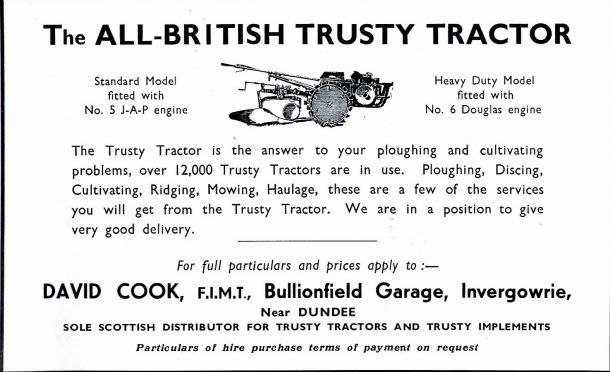Even after the ending of World War II, Britain and Europe were still short of food and huge efforts continued to maintain high production levels.
In those days a great deal of fruit and vegetables were grown by specialist growers in market gardens, nurseries and small holdings. These areas were farmed very intensively but were not large enough to be mechanised by farm machinery and so a whole industry of horticultural machinery had grown up to service them.
Both UK and US machines were popular and one of the most successful was a British concern called Tractors (London) Ltd which offered the Trusty range of walk behind pedestrian controlled machines and ride-on tractors.
The drive for more home-grown food during and after the war saw the firm produce its 10,000th machine in 1947.
The company had been formed back in 1929 by John C. Reach and his wife, Marion. Initially they were involved with the ill-fated Rushton tractor but by 1933 they had started to assemble their own pedestrian controlled Trusty Tractor at their Tottenham base.
Sales were slow but after a move to premises at Bentley Heath and the introduction of an extensive range of attachments, sales at last began to pick up. The attachments formed a complete range of tools needed by the market gardener who could now utilise their small plots of land to grow a wide range of crops on an almost continual basis.
The machines were powered by air-cooled engines produced by the likes of J.A.P. Douglas and Norton. Albion gearboxes began to be used to give a wider range of speeds and reverse gears. Although a ride on machine had been available since 1943 it was the introduction of the Trusty Steed in 1948 that a four-wheel machine was offered.
Trusty’s four-wheeled machines were also offered as towing tractors for Post Office work, factories, aerodromes and building sites but at £200 it seemed to be expensive for the time. Improvements were made over the ensuing years with more modern looking machines emerging before production ended in the 1960s.










